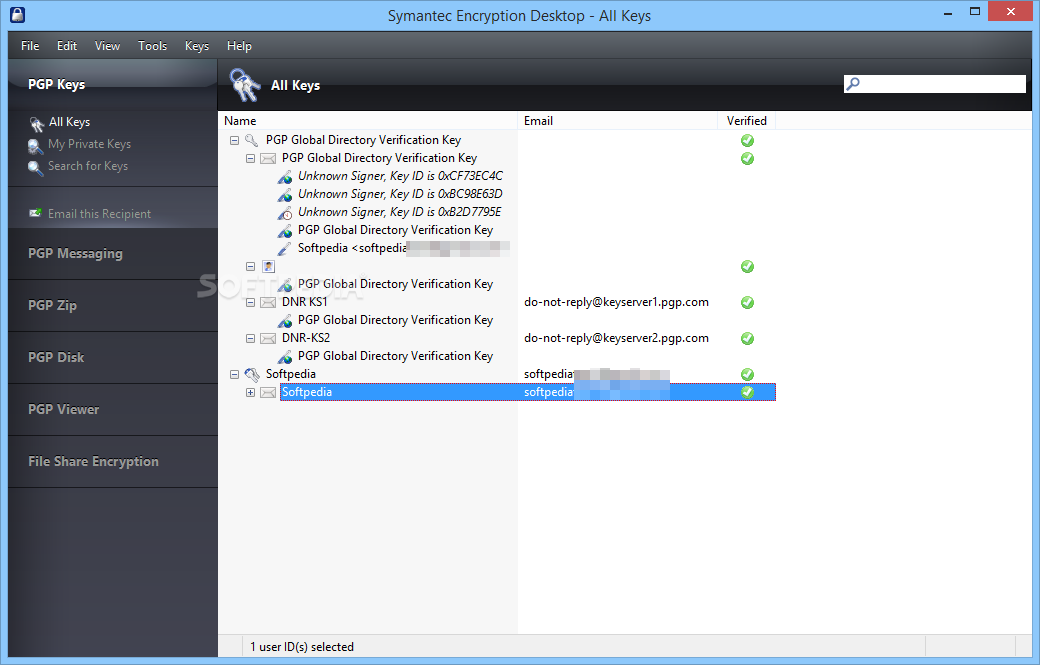

- SYMANTEC ENCRYPTION DESKTOP SUPPORT FOR MAC
- SYMANTEC ENCRYPTION DESKTOP SUPPORT MAC OS X
- SYMANTEC ENCRYPTION DESKTOP SUPPORT UPDATE
- SYMANTEC ENCRYPTION DESKTOP SUPPORT FULL
Laptops and flash drives are easily lost, and even desktop computers can be stolen. Symantec Encryption Desktop provides easy to use and secure encryption to protect sensitive data on your laptop, PC, or removable media. That is not what the UIC license for Symantec Encryption Desktop/PGP Desktop is for. You may have heard of PGP - Pretty Good Privacy - in the context of encrypting electronic mail and email attachments, and digitally signing email messages.
SYMANTEC ENCRYPTION DESKTOP SUPPORT FULL
Enter the user account name of the first user account that has administrator authority level in Full Disk Encryption and click OK.Why You Want to Use Symantec Encryption Desktop.
SYMANTEC ENCRYPTION DESKTOP SUPPORT FOR MAC
Open your Applications folder and locate the Full Disk Encryption Management Console for Mac (FDEMC) application.On the right, under Disk Properties, if you see the following text: Status: Encrypted - AES, then your hard drive is encrypted. On the left pane, select PGP Disk and the hard drive listed (in this example, the hard drive is VM Virtual SATA Hard Drive).Open your Applications folder and locate the Encryption Desktop application.Your hard drive is encrypted if you see the following text: "Macintosh HD Encrypted".

Click on Dell Data Protection or Dell Encryption Enterprise. Click on the Apple in the upper-left corner and go down to System Preferences.Ģ. Note: The name of your hard drive may vary from the "Macintosh HD" example shown here.ġ. Your hard drive is encrypted if you see the following text: FileVault is turned on for the disk "Macintosh HD".
SYMANTEC ENCRYPTION DESKTOP SUPPORT UPDATE
Update as of 7/31/20, PGP Encryption is End of Life and no longer supported as an encryption method on UCSF Managed Devices or devices connecting to the UCSF network (BYOD). Under System Storage, if you see the following text: OSDisk (C) and In compliance underneath, then your hard drive is encrypted. In the Data Protection window, click on the icon of the hard drive (aka System Storage). Search for Dell Data and click on it to open the Dell Data Protection Encryption application.ģ.Under BitLocker Drive Encryption - Hard Disk Drives, if you see the following text: Windows (C:) On, then your hard drive is encrypted. Click on the Start Menu at the bottom-left corner.
SYMANTEC ENCRYPTION DESKTOP SUPPORT MAC OS X

If you need help reviewing your system's encryption status, or if you find that your system is not encrypted, please contact our UCSF IT Service Desk. The list of computer encryptions below is ordered by most to least well-used.įor additional information regarding encryption, visit our Encryption FAQs. Multiple methods for deploying whole-disk encryptions are used at UCSF Medical Center and UCSF Campus.


 0 kommentar(er)
0 kommentar(er)
